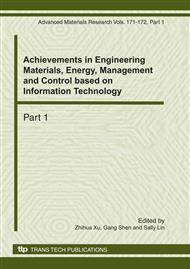p.374
p.379
p.385
p.389
p.394
p.399
p.403
p.408
p.412
Analyzing the Excavation of Fluid-Solid Coupling Foundation Pit Based on 3D Numerical Simulation and GA-ANN
Abstract:
Aiming at the complexity mechanism of foundation pit excavation, the paper proposed a feedback analysis flow combining 3D numerical simulation, orthogonal design, artificial neural networks(ANN) and genetic algorithm(GA). The sample data are produced by numerical simulation based on seepage theory and Biot consolidation theory, reflecting the interaction of hydraulics and mechanics. The BP neural network model is trained by above sample data and is optimized by GA, which can map the relation between soil layer parameters and character monitoring displacements well. Based on the relation, the soil parameters could be identified by GA. The method has been applied to analyze the Suzhou Runjie square foundation pit excavation and the permeability coefficients of soil layers were identified. The fluid-solid coupling process of foundation pit excavation based on inversion parameters are simulated. It indicates that the method can get satisfied precision, which provides guide meaning to specific engineering construction and appraisal.
Info:
Periodical:
Pages:
394-398
Citation:
Online since:
December 2010
Authors:
Price:
Сopyright:
© 2011 Trans Tech Publications Ltd. All Rights Reserved
Share:
Citation:


